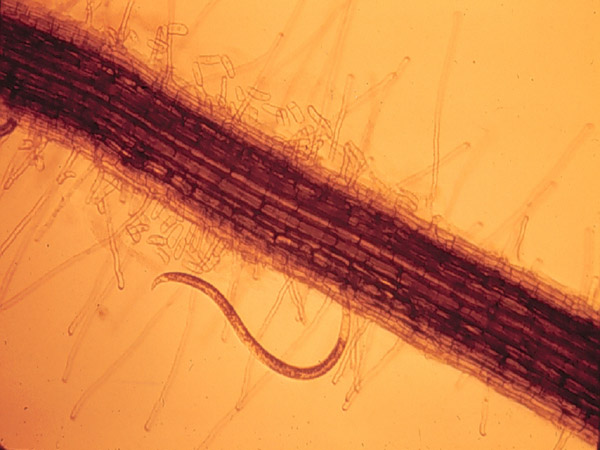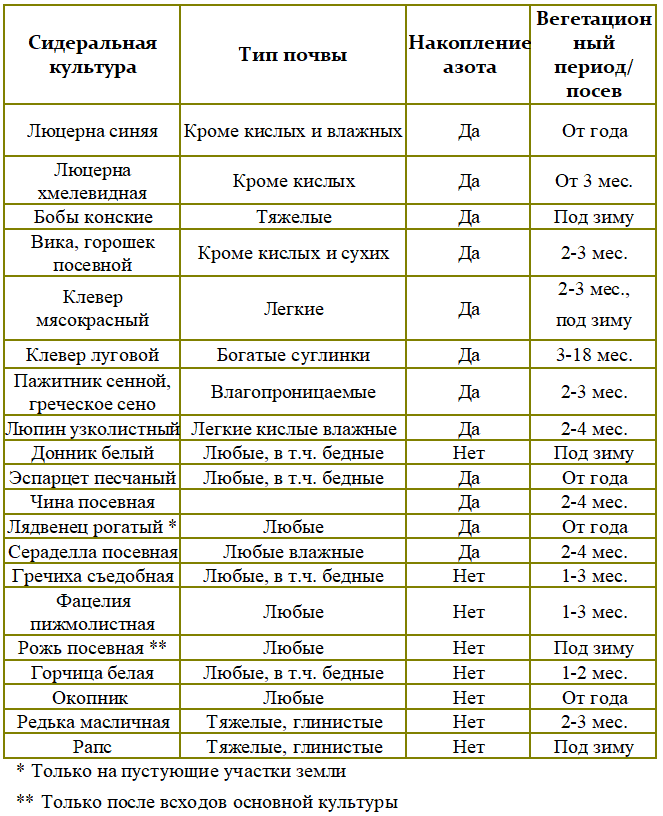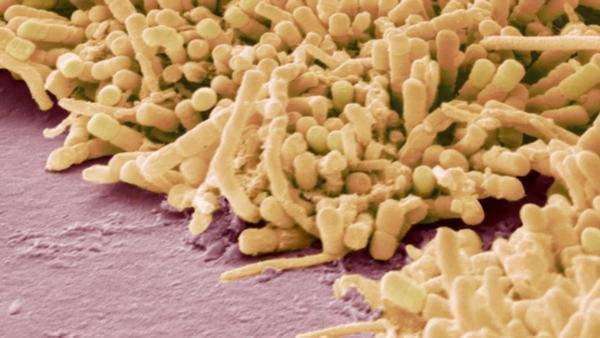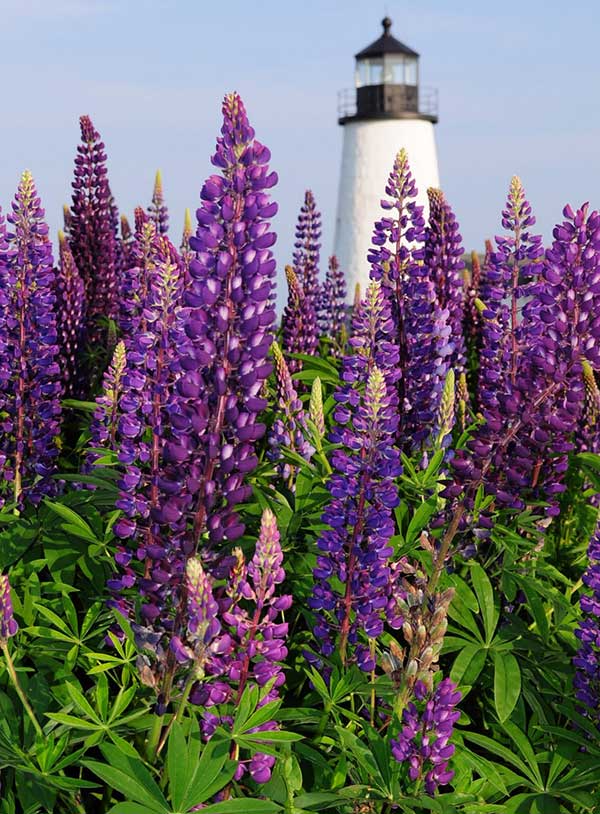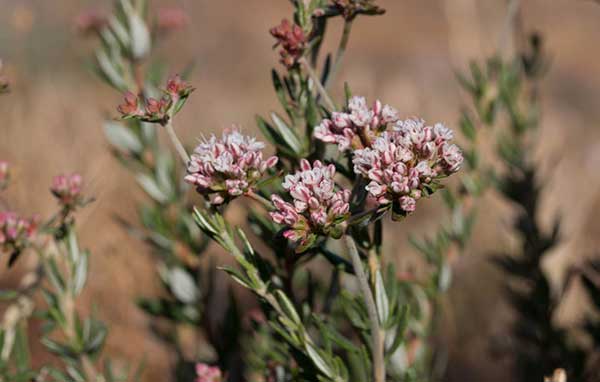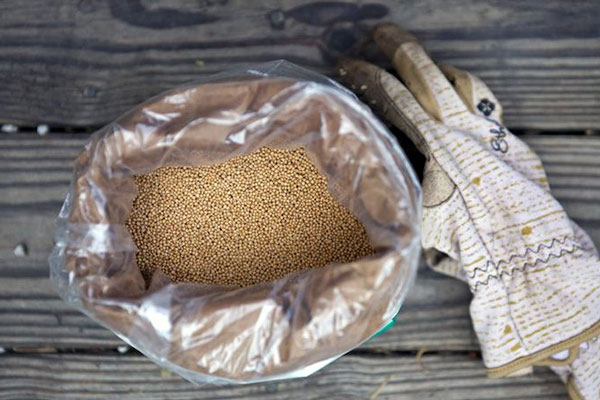One of the most serious and inevitable problems for any gardener is the gradual decline in soil fertility and soil erosion. This is not only due to the loss of minerals, which we can replenish with fertilizers, but also the loss of humus and the destruction of the soil microbiome. By harvesting, removing plant debris, and weeds, we deprive soil organisms of nourishment unless we add compost or manure. There’s another way to build healthy soil that’s available to everyone: using cover crops or green manures. What are cover crops?
 A field of crimson clover, one of the best leguminous cover crops.
A field of crimson clover, one of the best leguminous cover crops.
Cover crops and green manures are plants grown to improve and build soil. They are companions, sometimes alternatives to manure, compost, and mineral additives. Regular cultivation of cover crops and legumes reduces the need for mineral fertilizers and creates a natural balance in the soil, which is continually depleted by fruiting plants.
How to Improve Soil with Cover Crops
Improving soil structure is the main goal of cover crops. This occurs through root exudates and the decomposition of green mass.
So, what is soil? Soil scientists debate the classification of its organic components, but most agree that the “active” fraction (organic matter, bacteria, simple proteins, and sugars) and the “stable” fraction - humus.
The active fraction releases nitrogen, a bit of potassium, and phosphorus. The stable fraction, or humus, is the product of the decomposition of cellulose and lignin, creating dark and “spongy” soil. Without organic matter to feed soil microorganisms, there will be no humus. Often, we clean beds and rows thoroughly and burn plant debris at the end of the season due to plant diseases. Where will the building material for the soil come from?
Soil particles are also formed by microorganisms that digest plant material. They produce a “glue” from polysaccharides, which creates loose soil particles. Leguminous cover crops are best for producing polysaccharides, but they decompose over several months, making their effects more noticeable in the following season.
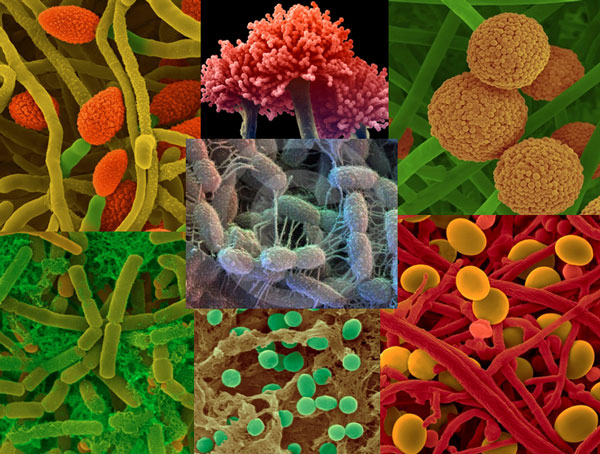 Soil microorganisms making the soil fertile.
Soil microorganisms making the soil fertile.
Cover crops, especially grains, have a positive effect on the soil through the exudates of their extensive root systems, which contain nutrient compounds acting as polysaccharide glue for soil microorganisms.
Cover Crops Protect Against Erosion
An obvious and important benefit is the protection of soil from erosion using cover crops. The topsoil with humus is the most important and vulnerable layer. Bare soil is washed away and compacted by watering and raindrops, while cover crops act as a “cushion” for the water - this is crucial with the onset of autumn rains. This is not all. The soil’s ability to retain and absorb moisture increases significantly, which is especially important during summer droughts.
Retention of Minerals and Stabilization of the Microbiome
Cover crops improve nutrient circulation by accumulating minerals that would otherwise be washed away by watering in the case of “fallow.” The most effective in this regard are grasses with a rapidly developing extensive root system.
Cover crops stabilize and enhance the soil microbiome. Most plants form beneficial symbioses with fungi and bacteria through their root systems. Microorganisms help plants absorb nutrients by receiving various sugars from the roots in return. The more plants sown, the more extensive the symbioses, making it easier for crops to establish such connections.
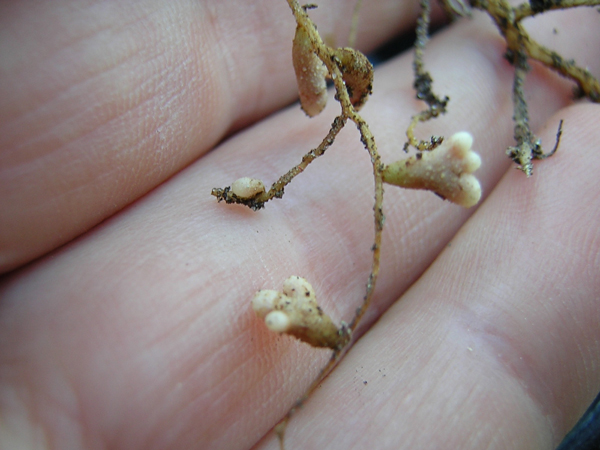 Rhizobium nitrogen-fixing bacteria creating nodules on legume roots.
Rhizobium nitrogen-fixing bacteria creating nodules on legume roots.
Cover cropping leads to an increase in the diversity of soil microorganisms and animals. Earthworms come to the large amounts of decomposing organic matter, and the population of bacteria that help plants feed and form soil structure and humus grows.
Returning Nitrogen to the Soil
Nitrogen can be added without the hassle of sowing cover crops, as many rightly point out. However, nitrogen from decomposing green mass is released gradually, feeding crops as they grow. I will write more about nitrogen for the garden and nitrogen-fixing bacteria in a separate article, as I have accumulated a lot of material on this topic.
Cover Crops Fight Soil Compaction
Not every sod and virgin land can be physically processed and dug up. However, the daikon radish can penetrate to a depth of 40 cm and loosen the compacted layers like a living plow. Grassy cover crops with powerful roots work on soil compaction.
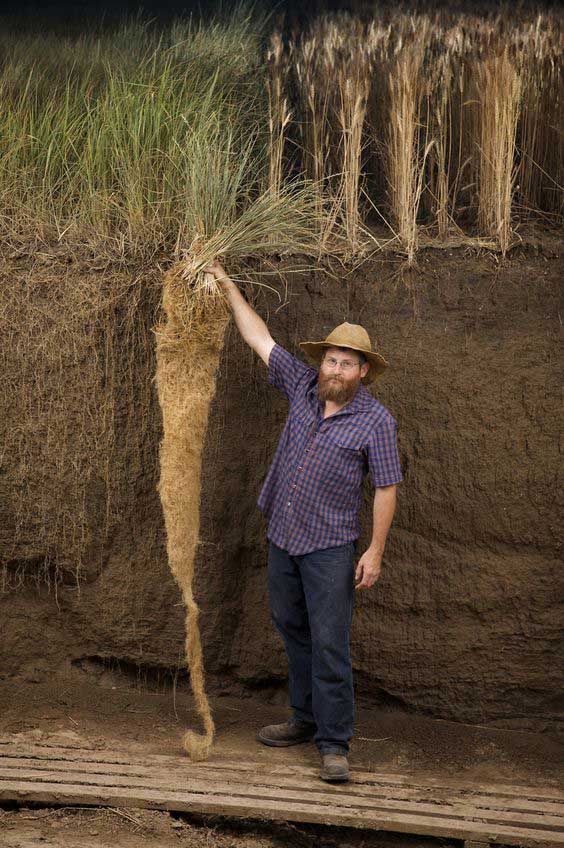 Agronomist holding bunches of perennial wheat.
Agronomist holding bunches of perennial wheat.
Pest and Disease Control
By forming soil, cover crops also combat pests by improving the overall immunity of plants. But that’s not all. The root exudates of some cover crops act as natural pesticides and fumigants that have evolved sophisticated self-defense mechanisms against insect pests.
Rye fights nematodes and thrips. Mustard deters wireworms, aphids, and many mold fungi. Clover cleans plantings of fungi and bacteria that affect nightshades. Sorghum, Sudan grass, rapeseed, mustard, and oilseed radish tackle several types of nematodes. Recent findings show that one soybean variety has developed resistance to late blight, and this variety will be studied and cultivated.
In nature, insects are controlled by natural predators such as parasitic wasps, birds, and highly specialized viruses and bacteria. Harmful insects are attracted to cover crop residues, thus providing food and survival for beneficial predators. Some cover crops attract predators that settle in clover, crucifers, and vetch. They feed on nectar, pollen, and moderately harmful aphids and thrips until more serious prey becomes available. In other words, natural garden protectors settle in before pests and are ready to meet them. Plants can emit aromatic signals to attract beneficial insects when pests attack. The more plants there are, the more effective the pest control.
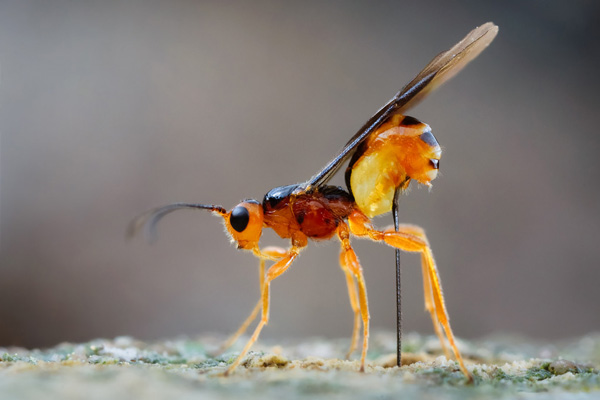 The parasitic wasp - one of the most effective predators attracted by cover crops to our garden.
The parasitic wasp - one of the most effective predators attracted by cover crops to our garden.
By leaving a few rows of unharvested cover crops, you provide a constant refuge and food source for beneficial insects.
For decades, fields and beds have been treated by removing and burning plant debris to prevent plant diseases in the next season. We leave bare soil, adding at best manure in holes and a minimal amount of mineral fertilizers. Although pathogens are always present, regardless of whether you have sterilized your beds - fungal spores fly over your garden without hindrance, so you can’t protect against late blight or root rot this way. There are several barriers to pathogen entry - roots, stems, and leaves are well-protected by natural barriers. Cover crops can help plants strengthen these barriers.
Cover Crops Against Weeds
Cover crops suppress weeds through dense sowing, rapid germination, and root exudates. For example, mulch made from mown winter rye prevents weeds from developing both physically and chemically. Rye residues gradually release chemicals that inhibit the growth of many annual broadleaf weeds. Living mulch blocks light and access to nutrients for weeds. The influence of one plant on another is called allelopathy.
Reducing Soil Temperature
Cover crops protect the soil from drying out and overheating during the hottest time of the year. However, winter crops may slightly delay snowmelt and soil warming for early planting. On the other hand, autumn-planted cover crops slightly increase the temperature of the fertile layer due to decomposition reactions.
Sources for the Article
I want to end by listing the sources for this article, as I have no personal experience with cover cropping yet. I approach sources seriously (I understand that “seriously” is subjective). The most useful from a soil science perspective were:
- Dovban K.I. “Green Manure in Modern Agriculture: Theory and Practice”;
- “Managing Cover Crops Profitably, 3rd Edition,” U.S. Department of Agriculture; Northeast Cover Crop, Marianne Sarrantonio, Rodale Institute, 1994.
Other, more popular literature included many conflicting statements, so I tried to gather the most general findings from all authors.
Books I reviewed while preparing the material include:
- B. Bublyk, V. Gridchin “Manna from Heaven”;
- Sepp Holzer “The Rebel Farmer”;
- B. Bublyk “Melange Garden”;
- Sally Jean Cunningham “Gardener’s Best Friends”;
- “The One-Straw Revolution” by Masanobu Fukuoka;
- “The Madness of the Farmer” by Faulkner.
I’ve written a whole series of articles on cover crops, and as I edit them, I’ll add them to the “Garden from Scratch” section.
Which Cover Crop is Best and How to Choose It
Different Ways to Grow Cover Crops
How to Sow, When to Sow, and When to Harvest Cover Crops
Which Cover Crops Are Best: A Review of the Best Grains and Brassicas
